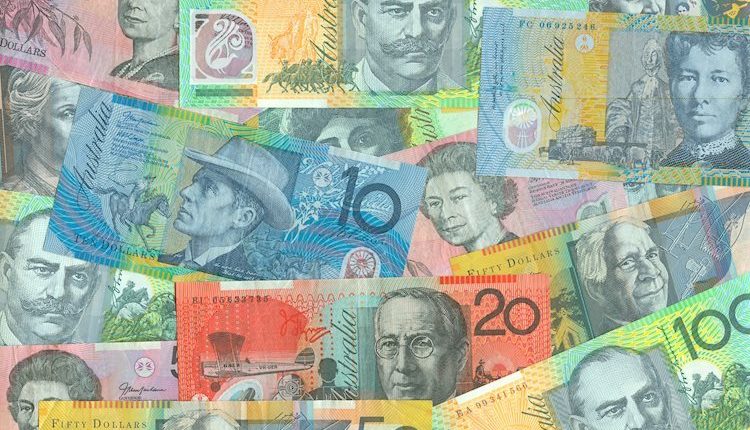- AUD/USD rose by 0.15% to 0.6520 in Tuesday’s session.
- Aussie climbed due to hawkish RBA Minutes, a weaker US Dollar, and hopes for Chinese economic stimulus.
- RBA Board members indicated no “immediate need” to adjust the cash rate, leaving the door open for future changes.
The AUD/USD climbed by 0.15% to 0.6520 in Tuesday’s trading, driven by several factors. The hawkish Reserve Bank of Australia (RBA) Minutes provided support to the Australian Dollar, as did a weaker US Dollar and hopes for Chinese economic stimulus. The market’s attention will now shift to upcoming mid-tier US economic data and speeches by Federal Reserve (Fed) officials, which could further influence the pair’s movement.
The AUD/USD has rebounded as the US Dollar weakened, potentially aided by hawkish RBA sentiment. However, the Aussie faces challenges due to weak domestic and Chinese economic data.
Daily digest market movers: Australian Dollar gains ground aided by hawkish RBA and weaker USD
- The RBA Board remains vigilant to upside inflation risks and believes policy needs to remain restrictive.
- According to the Minutes, the Board sees no “immediate need” to change the cash rate, but nothing is ruled out regarding future changes.
- The Board discussed scenarios where policy would need to stay restrictive for longer or tighten further.
- The report showed that the bank considers that rates might need to rise if the Board judged that policy was not as restrictive as assumed.
AUD/USD technical outlook: Indicators are in recovery mode but still in negative territory
Technical indicators for the AUD/USD pair continue to show signs of recovery, with both the Relative Strength Index (RSI) and Moving Average Convergence Divergence (MACD) trending higher. However, they remain in negative territory, suggesting that the downtrend is not yet over.
For a sustained recovery to be confirmed, buyers will need to push the indicators back into positive territory and hold them there. The conquering of the 0.6580 level near the 20-day Simple Moving Average (SMA), would be a strong sign that the pair has recovered.
RBA FAQs
The Reserve Bank of Australia (RBA) sets interest rates and manages monetary policy for Australia. Decisions are made by a board of governors at 11 meetings a year and ad hoc emergency meetings as required. The RBA’s primary mandate is to maintain price stability, which means an inflation rate of 2-3%, but also “..to contribute to the stability of the currency, full employment, and the economic prosperity and welfare of the Australian people.” Its main tool for achieving this is by raising or lowering interest rates. Relatively high interest rates will strengthen the Australian Dollar (AUD) and vice versa. Other RBA tools include quantitative easing and tightening.
While inflation had always traditionally been thought of as a negative factor for currencies since it lowers the value of money in general, the opposite has actually been the case in modern times with the relaxation of cross-border capital controls. Moderately higher inflation now tends to lead central banks to put up their interest rates, which in turn has the effect of attracting more capital inflows from global investors seeking a lucrative place to keep their money. This increases demand for the local currency, which in the case of Australia is the Aussie Dollar.
Macroeconomic data gauges the health of an economy and can have an impact on the value of its currency. Investors prefer to invest their capital in economies that are safe and growing rather than precarious and shrinking. Greater capital inflows increase the aggregate demand and value of the domestic currency. Classic indicators, such as GDP, Manufacturing and Services PMIs, employment, and consumer sentiment surveys can influence AUD. A strong economy may encourage the Reserve Bank of Australia to put up interest rates, also supporting AUD.
Quantitative Easing (QE) is a tool used in extreme situations when lowering interest rates is not enough to restore the flow of credit in the economy. QE is the process by which the Reserve Bank of Australia (RBA) prints Australian Dollars (AUD) for the purpose of buying assets – usually government or corporate bonds – from financial institutions, thereby providing them with much-needed liquidity. QE usually results in a weaker AUD.
Quantitative tightening (QT) is the reverse of QE. It is undertaken after QE when an economic recovery is underway and inflation starts rising. Whilst in QE the Reserve Bank of Australia (RBA) purchases government and corporate bonds from financial institutions to provide them with liquidity, in QT the RBA stops buying more assets, and stops reinvesting the principal maturing on the bonds it already holds. It would be positive (or bullish) for the Australian Dollar.
Read the full article here

